It can be intimidating getting started growing with hydroponics so picking easy to grow plants is important to give you the best chance at success. Most plants are easy to grow using hydroponic methods. There is a learning curve, but it isn’t much more challenging than the learning curve involved in having a soil-based garden.
The easiest plants to grow hydroponically have shallow root systems and typically produce water-rich vegetables and fruits like tomatoes, lettuce, and strawberries. Root vegetables, tubers, and fruit trees are harder to grow using hydroponic methods.
If you’re still not sure where to start I’ll share the easiest plants to grow hydroponically, the plants you should avoid, and how to choose which plant to start with.
Easy Plants to Grow Hydroponically
While most plants can be grown hydroponically some are easier than others. I’ve put together this list of the easiest, hardiest, and most productive plants so that you can have the most success while growing.
None of these plants will require you to custom mix fertilizer, but many of them benefit from the custom mixes used by commercial growers. An all-purpose nutrient solution will do just fine for home growing.
These plants are also commonly grown using hydroponic methods, so it is easy to find information on them if you’re having trouble.
Lettuce
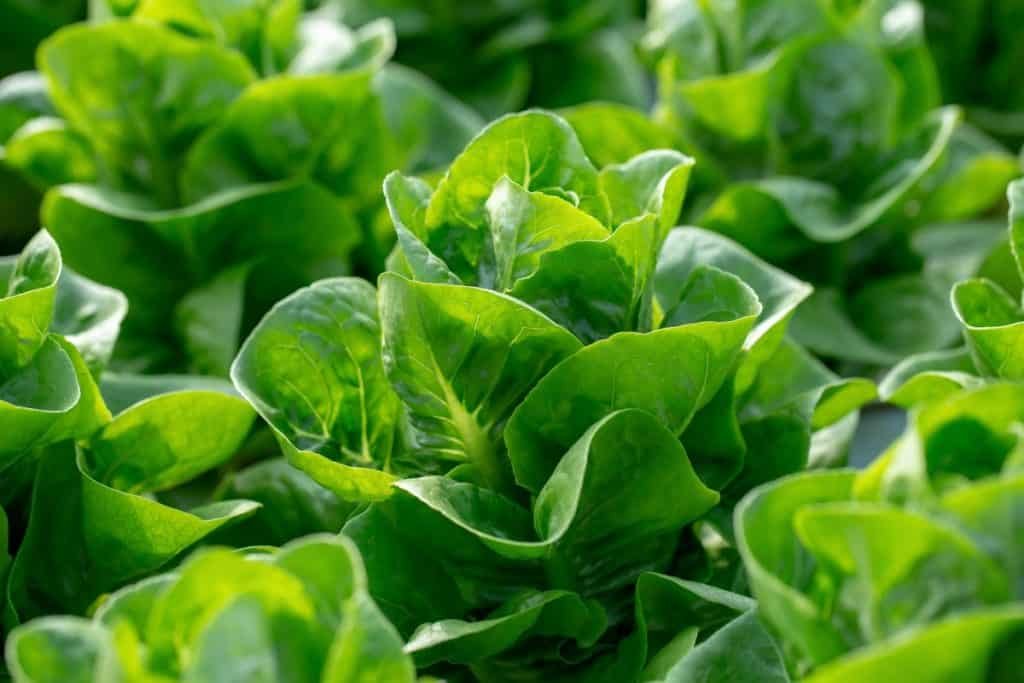
Lettuce is the easiest plant to grow hydroponically, and it can be harvested within weeks. It’s also one of the easiest for indoor growing since you don’t need to be worried about pollination.
There are many varieties of lettuce that you can choose from: romaine, bibb, butter, green leaf, red leaf. But if you are just starting out, I suggest avoiding iceberg as it takes longer, and loosehead lettuce is easier for beginners.
Quick Reference Growing Guide for Hydroponic Lettuce
- How to start: from seed
- Time to harvest: 30-50 days depending on the variety and preferred maturity
- Preferred pH level: 5.2-6.2
- Light Requirements: 12-18 hours
- Temperature: 45-70 degrees Fahrenheit
Tips for Growing Lettuce Hydroponically
- If you stagger your planting schedule, you can have a steady supply of fresh lettuce.
- Lettuce seeds are tiny, use a damp toothpick to handle them.
- Using the cut-and-come-again method, you can harvest from the same plant multiple times if you take just what you need.
- You can harvest early for microgreen or baby leaf lettuces.
Herbs
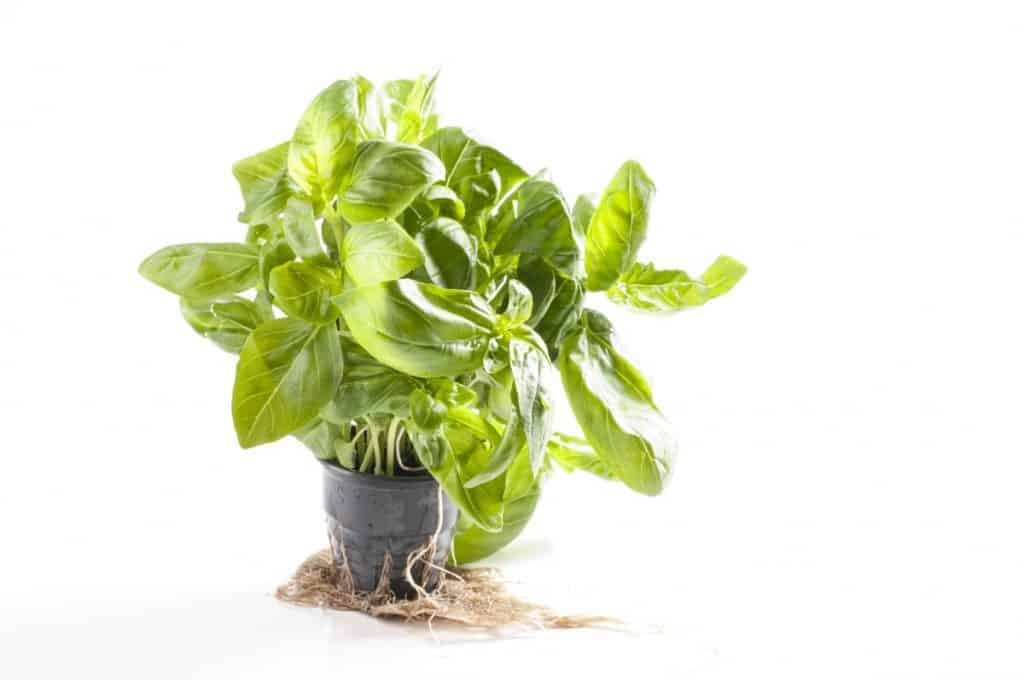
I’m talking about basil, oregano, thyme, cilantro, and mint. They are all easy to grow. In fact, some of the earliest hydroponic systems marketed to consumers were intended to be used for growing fresh herbs.
There are some herbs that you should wait to plant until you have more experience like chervil, coriander (which is the same plant as cilantro but requires cooler temperatures), fennel, parsley, and tarragon. These have special requirements that make them less beginner-friendly, but honestly, once you’re up and running, give them a shot!
Quick Reference Growing Guide for Hydroponic Herbs
- How to start: from seed or cutting
- Time to harvest: about six weeks, depending on the plant
- Preferred pH level: 6.0-6.8, varies depending on the plant
- Light Requirements: most herbs need 14-18 hours
- Temperature: around 70 degrees Fahrenheit is a sweet spot for most herbs
Tips for Growing Herbs Hydroponically
- A single plant can be trimmed and harvested again and again.
- Plants may grow to be quite large!
- Most herbs are easy to propagate from cuttings.
Tomatoes
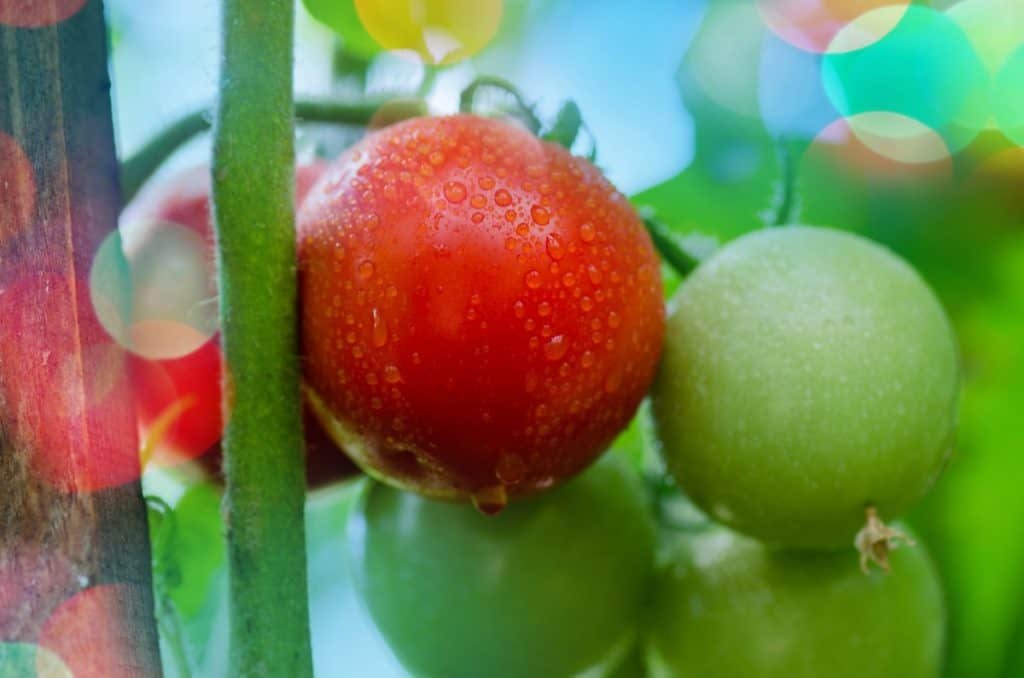
You cannot have a list of hydroponic plants without tomatoes! In many ways, tomatoes are easier to grow in a hydroponic system than an outdoor, soil-based system. You don’t have to deal with pests, which can greatly reduce the number of harvestable tomatoes.
However, tomatoes are a little more difficult than lettuce and herbs. Still, it is a good place to start if you want to grow fruit-producing plants because tomatoes love water and generally thrive in a hydroponic environment.
Tomato plants are self pollinating so you can have only one tomato plant and still get fruit from it. But if you are growing indoors you will likely need to help with the polination.
Gently shaking the plant to mimic a gentle wind should be enough to pollinate your tomatoes. You can also vibrate the plant with an electric tooth brush too. Doing this every 2-3 days when your plant is in flower will be enough to produce fruit.
Some seed companies sell tomatoes seeds that work well in hydroponic environments. It is always a good idea to select these seeds if possible.
When choosing tomato seeds, you’ll need to pick between bush varieties and vine varieties. There are advantages and disadvantages to both, so you’ll have to make the best choice for your situation.
- Bush/Determinate Tomatoes: These plants tend to grow tall and sprawl quite a bit. If you don’t have a lot of floor space, this isn’t the best option for you.
- Vine/Indeterminate Tomatoes: These usually produce smaller tomatoes, but there is still a lot of vegetation to manage with them. The vines can be trained so that they are not in the way or interfering with other plants. The training does require more work, however.
- Dwarf tomatoes: Dwarf varieties are usually best if you do not have a lot of space. They don’t get bushy or super tall. The tomatoes are usually smaller, and you won’t get as high a yield.
Pruning is the best way to keep your plant a manageable size. Removing suckers and toping to the plant will prevent your plant from getting too big and concentrate on producing more fruit than leaves. If you want to grow tomaotes using a vertical garden, check out my article, How Close Can You Plant Tomatoes Vertically?
Quick Reference Growing Guide for Hydroponic Tomatoes
- How to start: from seed
- Time to harvest: about three months
- Preferred pH level: 5.5-6.5
- Light Requirements: 8-10 hours, some prefer 18 hours
- Temperature: 60-70 degrees Fahrenheit
Tips for Growing Tomatoes Hydroponically
- Tomato plants tend to grow larger than you’d expect. Be sure you have plenty of space and stay on top of pruning.
- Many people prefer to grow them in buckets, which allows you to move them.
- Tomatoes will produce for months as long as you keep the plant healthy.
Cucumbers
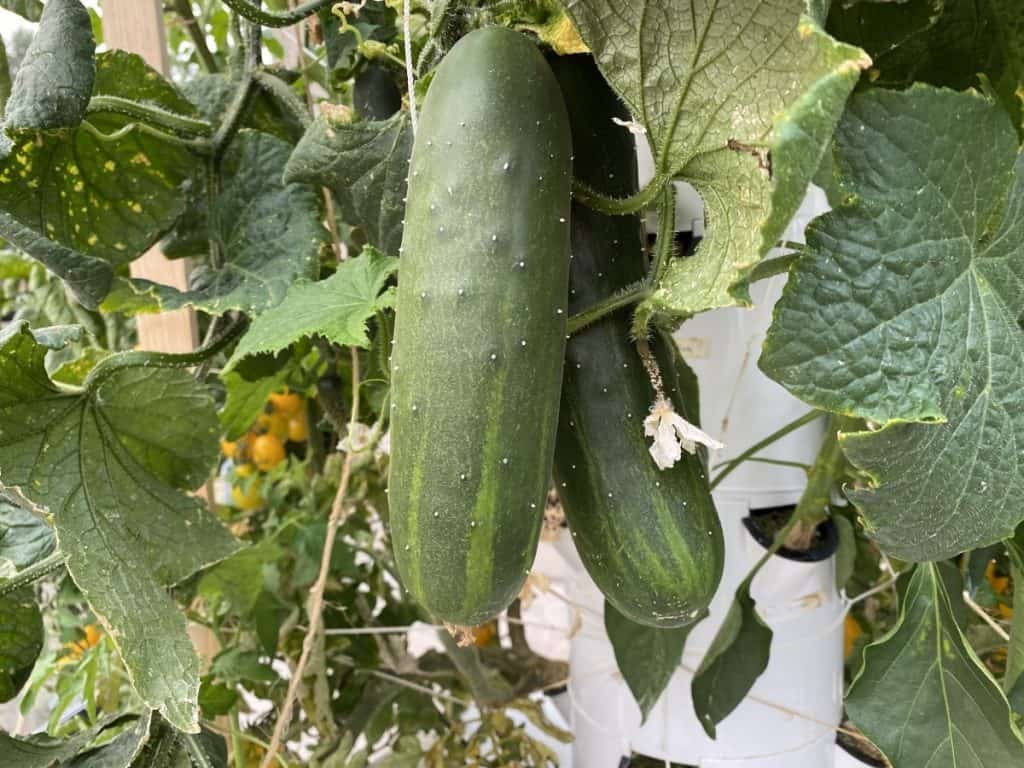
Growing hydroponic cucumbers is just as easy as growing tomatoes. In fact, you’ll find many similarities between these two plants.
If you don’t have a greenhouse space to dedicate to your cucumbers, it is best to grow a bush variety because vining cucumbers tend to sprawl quite a bit. Bush varieties will still get quite large (and produce a ton of cucumbers). They need to be at least 3 feet apart.
Hand pollination may be necessary when growing indoors. Unfortunately, hand pollination is not as easy with cucumbers as it is with tomatoes. You will need to transfer pollen from male flowers to female flowers using a q-tip or paintbrush.
Quick Reference Growing Guide for Hydroponic Cucumbers
- How to start: from seed
- Time to harvest: 8-10 weeks
- Preferred pH level: 5.0-6.0
- Light Requirements: 12-14 hours a day
- Temperature: 70-80 degrees Fahrenheit
Tips for Growing Cucumbers Hydroponically
- Cucumbers can have problems with powdery mildew, so it is always best to use seeds that are disease resistant and hydroponic friendly.
- You will need to hand pollinate your cucumbers if you grow them indoors.
Strawberries
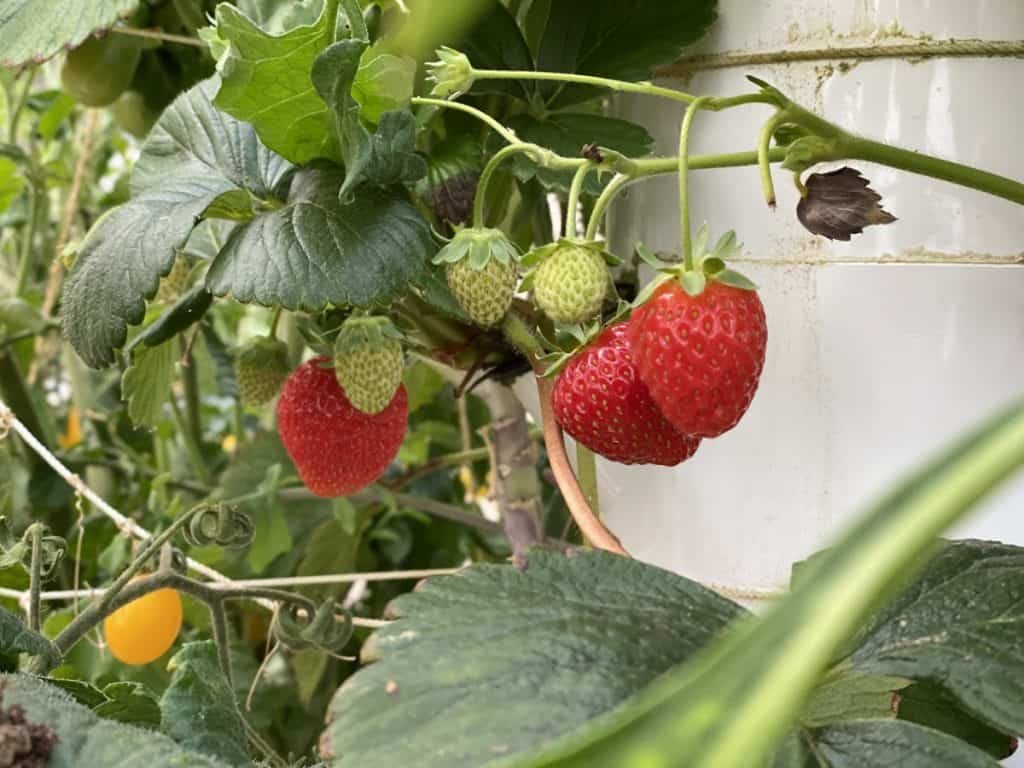
Strawberries are a favorite among hydroponic growers because you get the most bang for your buck. Have you seen the price of organic strawberries at your local grocery store? They’re very expensive.
You’ll save a lot of cash by growing your own hydroponically, AND you’ll have fresh strawberries year-round. Plus you’re homegrown strawberries will be so tasty you’ll never go back to store bought ones again
Strawberry flowers contain both the male and female parts for pollination. If growing indoors you may be able to just gently shake the plant to pollinate the flower.
If your berries are coming out small or oddly shaped then you should try hand pollinating. Use a small paintbrush and from the outside of the flower into the center.
Quick Reference Growing Guide for Hydroponic Strawberries
- How to start: from runners, starting strawberries from seed takes years!
- Time to harvest: 2 months
- Preferred pH level: 5.5-6.2
- Light Requirements: approximately 12 hours
- Temperature: 65-75 degrees Fahrenheit
Tips for Growing Strawberries Hydroponically
- When grown hydroponically, strawberries produce year-round, so be ready to add them to your diet on a regular basis. (Not a problem for most of us!)
- Runners can be removed from the strawberry plants and replanted if you need more plants.
- Strawberry plants do not get huge, so they fit into most hydroponic growing spaces.
- Keep strawberries at hip height or higher for easy harvesting.
Peppers
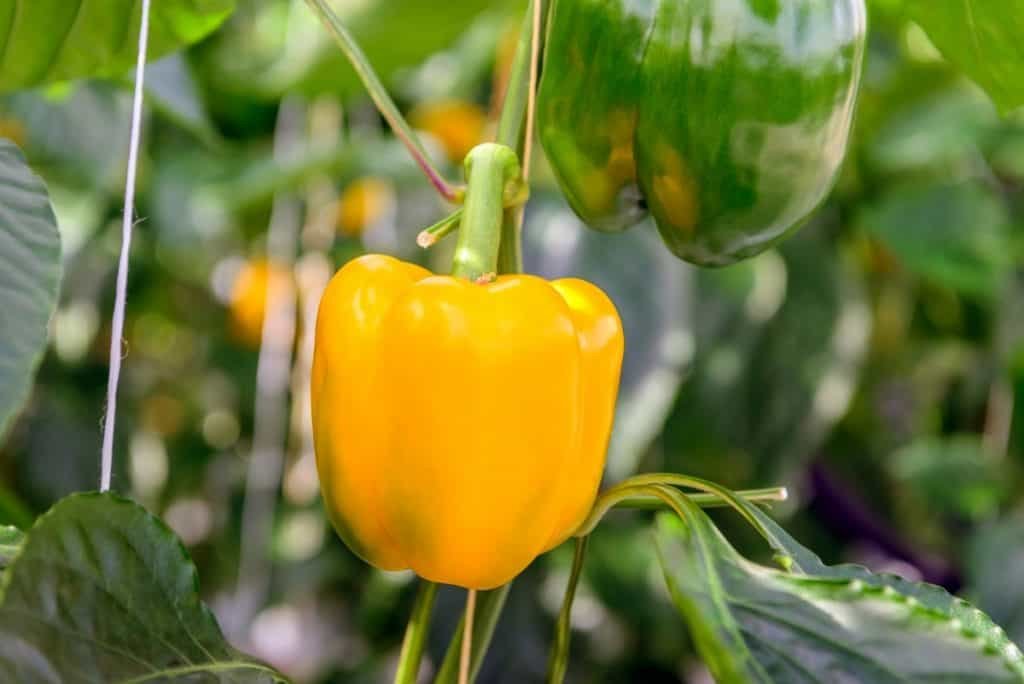
Peppers, both hot and sweet, are easy to grow hydroponically. They don’t take up as much space as tomatoes or cucumbers. You don’t even have to worry about pollinating them because they are a self-pollinating plant. Again just gently shake the plant to cross pollinate.
Quick Reference Growing Guide for Hydroponic Peppers
- How to start: from seeds
- Time to harvest: 3 months
- Preferred pH level: 6.0-6.5
- Light Requirements: 14-18 hours
- Temperature: 70-80 degrees Fahrenheit
Tips for Growing Peppers Hydroponically
- Peppers can often be paired with tomatoes in your growing space as they have similar growing requirements.
- You may need to stake pepper plants to keep them upright. They have a tendency to droop with the weight of the pepper.
- Some pepper plants get big. If you have a small growing space, make sure to pick smaller varieties or prune the plant to 8-12 inches.
Peas
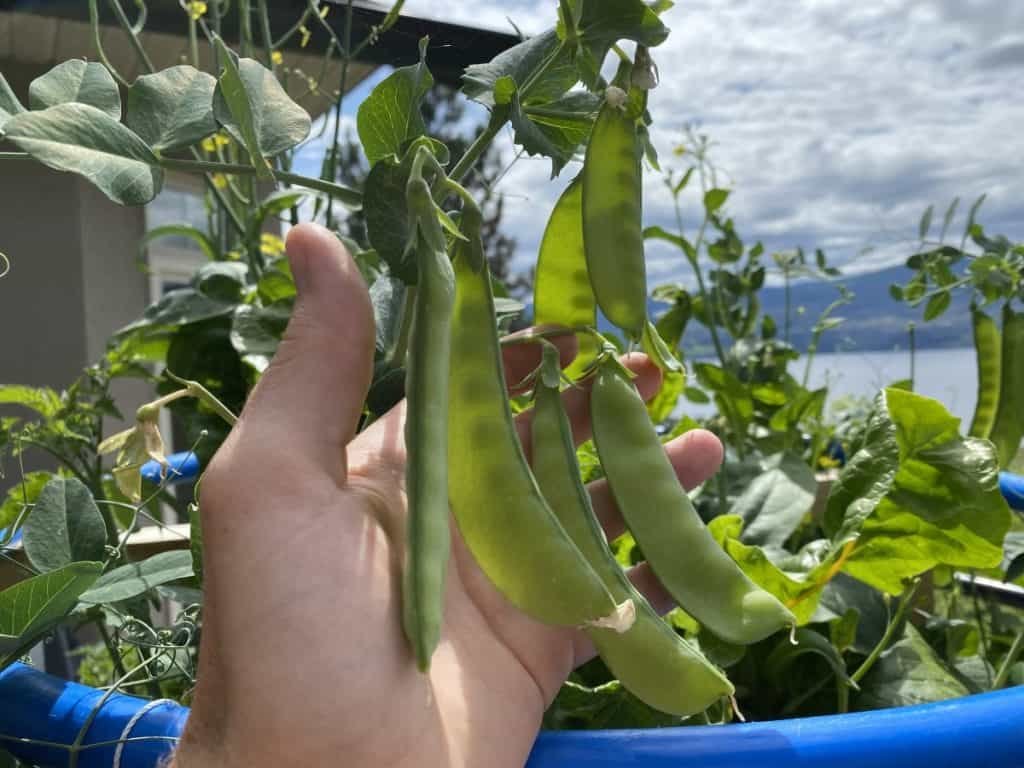
So you might not be as excited to grow peas as you are to grow strawberries, but they are delicious fresh from the vine. Peas do well in hydroponic systems, but there are some things you should consider before planting.
Peas need a trellis to support the vines of the plant, and they require a deep planter to help support their roots. Otherwise, they are very easy to grow.
Quick Reference Growing Guide for Hydroponic Peas
- How to start: from seed
- Time to harvest: about two months
- Preferred pH level: 6.0-7.0
- Light Requirements: 12 hours
- Temperature: 55-65 degrees Fahrenheit
Tips for Growing Peas Hydroponically
- Because peas prefer cooler temperatures, you might like to keep them in a cooler environment with your lettuce.
- We recommend growing peas with edible pods because it makes harvesting a breeze—no need to remove the pod. You can eat them fresh from the vine or toss them in your wok for a stir fry.
- Make sure you train the pea vines to the trellis and that they don’t start to twine themselves around nearby plants.
House Plants
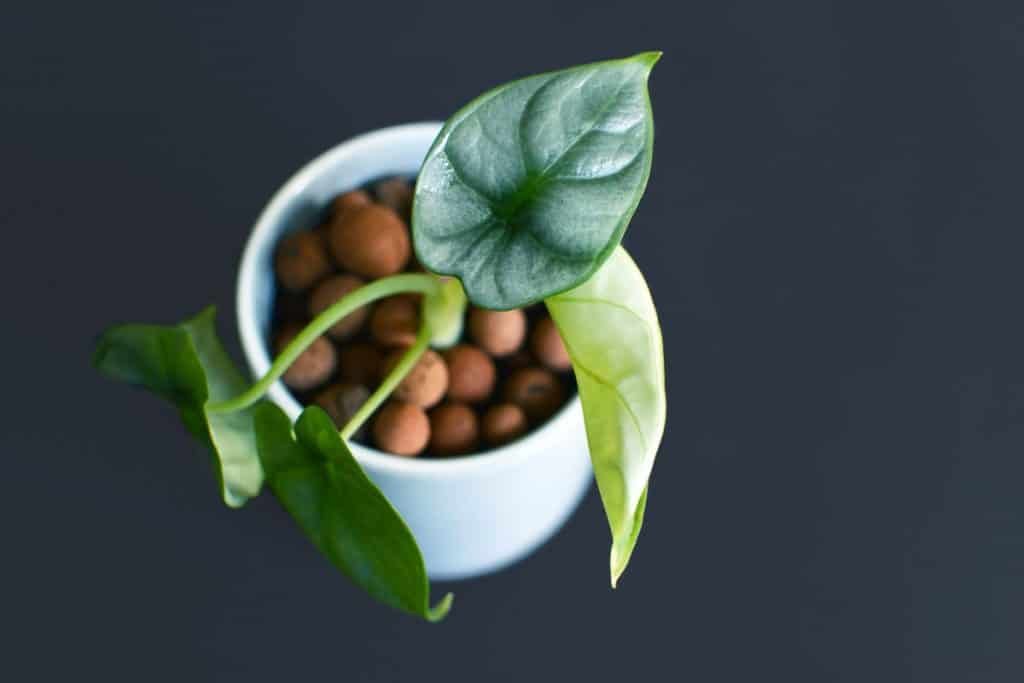
If you’re more interested in growing plants for their beauty and the life they bring to a room than for eating, then you’ll be interested to know that house plants can be grown hydroponically!
Simply start the plant from a clipping or a seed as you would for any other plant. Once the plant has established a root system, you will need to feed it fertilizer regularly, but that’s it.
If you need to move it to a larger pot, remove the plant from the water and rinse off the roots before placing it in its new home. Now that’s low maintenance plant care!
Here are some beautiful plants that can be grown indoors with sufficient light:
- Spider plants
- Pothos
- Chinese money plant
- Ivy
- Peace lily
- Hoya
- Dahlia
- Orchids
- Petunia
- Geranium
- Fiddle leaf fig
It is hard to believe because we’re more familiar with plants growing in dirt, but most house plants can be planted using hydroponic methods with no adverse effects. In fact, many plants do much better!
Plants that are Harder to Grow Hydroponically
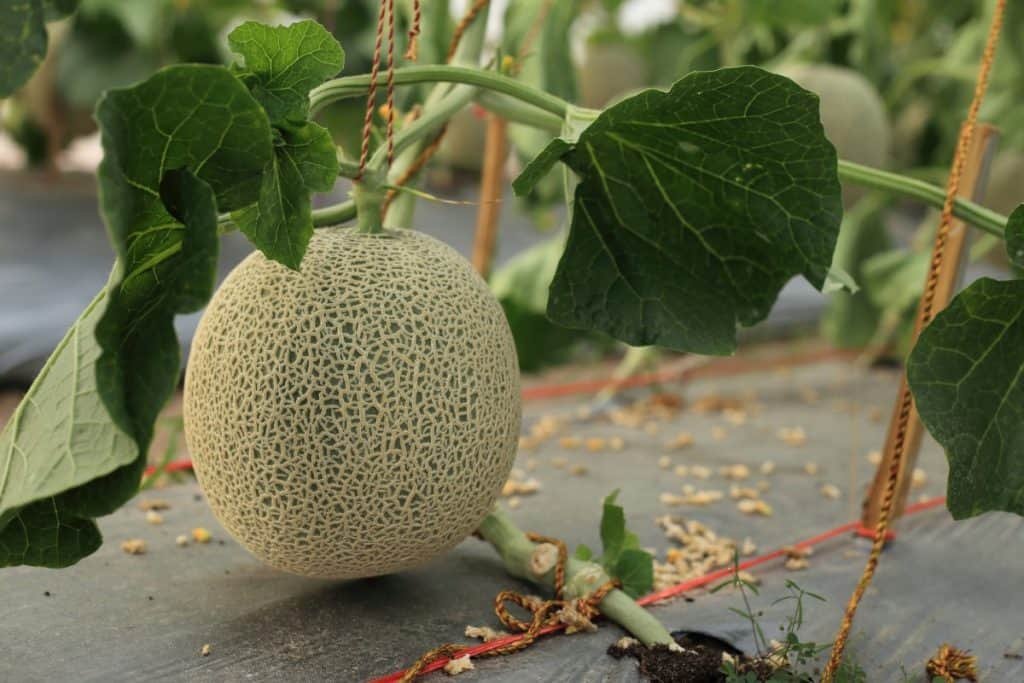
Now, there are some plants that you should steer clear of unless you’re looking for a challenge. These plants can be grown hydroponically but it’s best till you have some experience first.
- Plants that sprawl: Unless you have a massive greenhouse or growing space, avoid plants that excessively sprawl like pumpkins, gourds, melons, and winter squash. It’s just a lot of plants to handle when you’re first learning to grow, and most of us don’t have enough space for it.
- Plants that grow tall: I’m looking at you, corn. Generally, the amount of corn each stalk of corn produces is not worth the space investment for growing these tall plants.
- Root vegetables: Root vegetables like carrots, parsnips, turnips, and radishes can be more difficult to grow if you’re not using the right substrate. They generally require some experimentation before you can produce a decent amount of them. It is possible, but save these vegetables for your second year of hydroponic growing.
- Tubers: Tubers are things like potatoes, sweet potatoes, and jicama. They are harder to grow using hydroponic methods because the tuber isn’t particularly fond of being super damp. It CAN be done, but it isn’t easy.
- Fruit trees: Once again, you CAN grow fruit trees hydroponically and have it bear fruit, but it isn’t easy. It is also uncommonly done, so finding information about it is more difficult. It also usually takes a lot of space and a lot of light to accomplish.
Don’t let this list scare you off. If you have your heart set on a hydroponic lemon tree, go for it. Do the research, and you’ll be making lemonade before you know it. But if you’re just trying to get your feet wet in hydroponics, stick to the easier plants and work your way up to these more challenging options.
How to Pick the First Plant to Grow Hydroponically
With so many good options, it can be hard to decide where to start. There’s really no wrong way to start growing plants hydroponically. You just have to jump in, but if you want to make a thoughtful decision, consider some of the following before buying your first seeds:
- What do you like to eat? If you absolutely love cucumbers, then you should grow cucumbers! You’ll be more excited to harvest and put the time and energy into growing them properly if you enjoy them.
- How much space do you have? If you’re tight on space, lettuce, herbs, and small pepper plants are your best options to start with. You can grow a lot of plants in a small amount of space.
- How much money will you save? A lot of us grow our own food hydroponically to save some money in the grocery budget and to have access to delicious, fresh organic fruits and vegetables. Growing your own strawberries, tomatoes, and bell peppers can save you money, but growing your own peas… not so much.
- How much time do you have? If you don’t have a ton of time, you’re going to want a low-maintenance plant. Most of the plants on this list don’t need a lot of time, but lettuce requires the least amount of time. You don’t need to prune it or pollinate it or train vines.
- What seeds can you access? We always recommend that you buy hydroponic-friendly seeds because you’ll get the best results. However, if you happen to have a packet of tomato seeds handy, go ahead and use them.
After answering these questions, you should have a good idea of where you should start, given your unique circumstances.
Which Plant Should I Grow with Hydroponics?
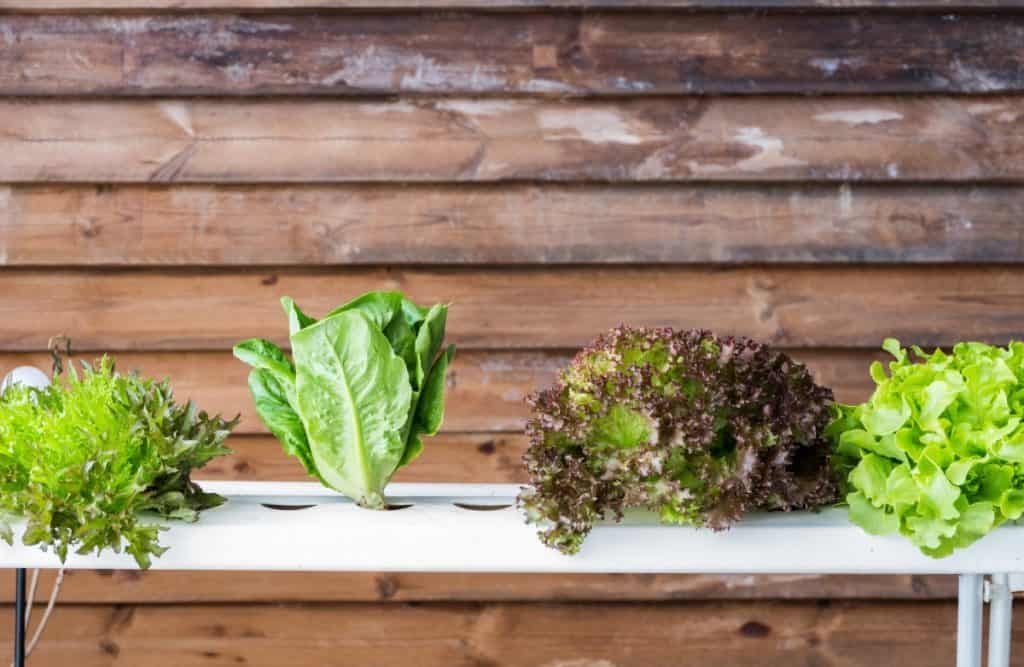
Without any hesitancy, we would say that leafy lettuce like butterhead or green leaf lettuce is the best place to start.
Here’s why you should start with lettuce:
- Lettuce doesn’t take up a lot of space.
- It doesn’t require special or large pots.
- You can grow lettuce using any hydroponic system.
- You don’t need high temperatures for lettuce, which means you can grow it in your basement or greenhouse in colder months.
- Lettuce grows rapidly, so you can have the satisfaction of a harvest sooner.
- Hydroponic-friendly seeds are usually easy to access, which increases your chances of being successful.
- You don’t need to fuss with lettuce as it is maturing. Just let it do its thing!
- Organic lettuce at the grocery store can be expensive, and that cost adds up quickly if you eat salad daily or have a large family. Growing your own lettuce will save you money, and your hydroponic system will pay for itself in no time.
But if you don’t like lettuce, then you shouldn’t start there. The most important thing is that you grow things you enjoy.
Final Thoughts
It is easy to grow plants with hydroponics! There is a learning curve, and you need the proper setup, but this is also true of traditional gardening methods. All the things you would need to do for your regular garden plants, you’ll be doing for your hydroponic plants. It just looks a little different.
With a little research and the right plants, you’ll be growing the ingredients for your own tomato sauce or summer salad in no time.
